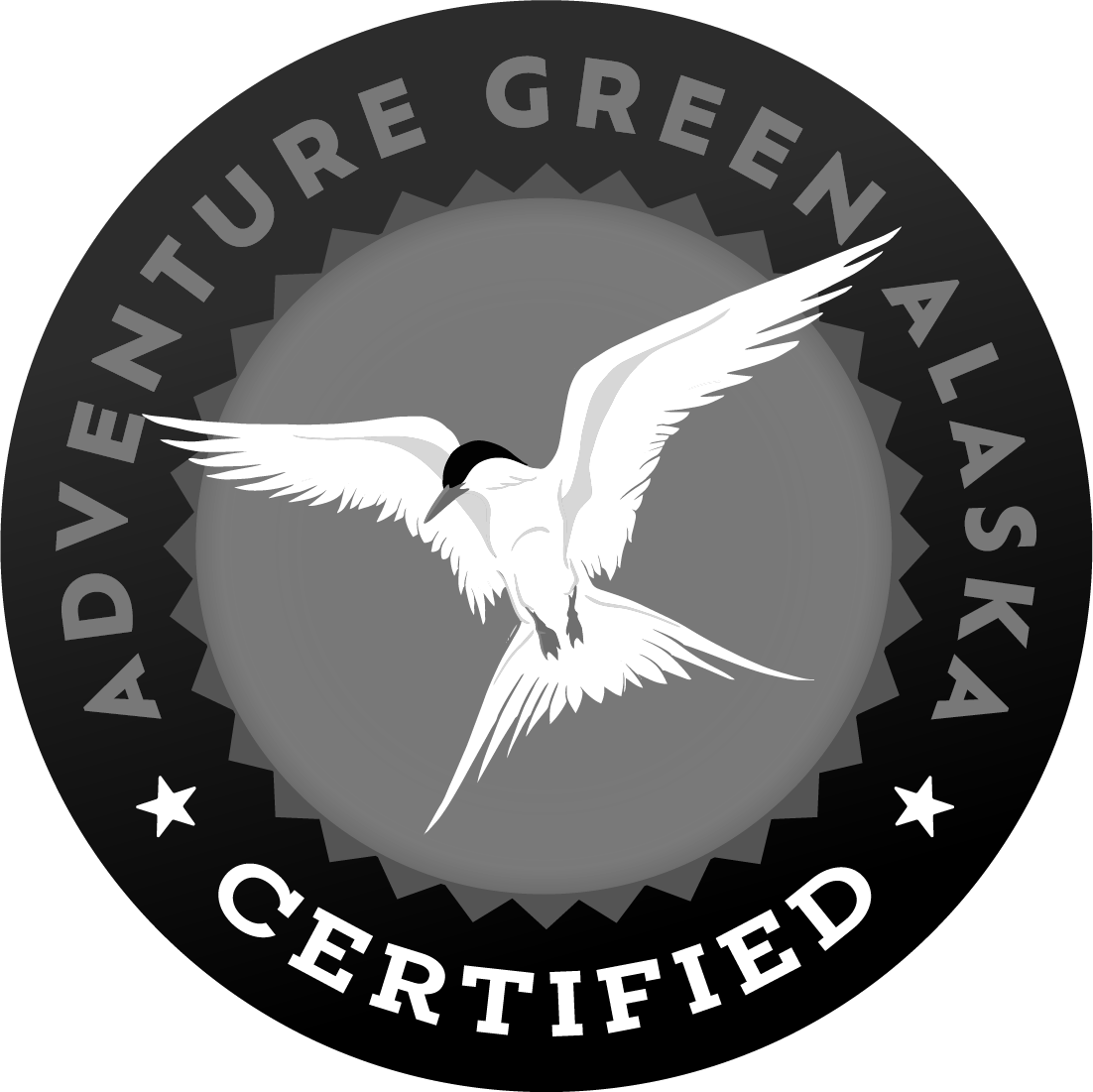






By Dakotah Fozzard, Greenhouse and Groundskeeping Manager, 2021-22
Suit up for a romp in Camp Denali’s greenhouse and gardens. You’ll find it comparable to getting ready for any hike in Denali National Park. You’ll need a hat and sunglasses; remember the sun barely sets. A baggy, light-weight shirt keeps most of the bugs at bay. Same goes for your impenetrably thick pants. Don’t be fooled by a warm summer day; you still need warm layers and a rain jacket. Consider a mosquito head net; don’t worry, uglier things are in style these days.
The greens, herbs, garnishes, flowers and more you see as you wander through the greenhouse and sporadic gardens are all grown organically for Camp Denali. For more than thirty years, this modest, micro farm has provided fresh produce for the kitchen to include into the guests’ dining experience.
Here are three lessons from Camp Denali’s micro-farm:
#1 Thank a sanitation worker. Start a compost.
Did you ever do a school project where you carry around all of the trash you produced on your person for a week? It’s utterly perturbing. Try it sometime. Camp Denali has done this since 1952. Packing it in and packing it out is no easy task when you have the food, supplies, and trash of 50-100 people to manage. Not to mention the challenges of storing odorous items until transport. One man’s trash is a grizzly bear’s tragic treasure.
Composting in a remote community without sanitation services is essential. It recycles kitchen scraps, coffee grounds, egg shells (dried so odorless), egg cartons, brown paper towels, leaves, grass, garden waste, sawdust, and more to feed vegetables and flowers. It reduces the amount of fertilizer needed. It’s exceptionally easy.
See the image of Camp Denali’s recipe for compost lasagna. Like real lasagna, it’s definitely not an exact science.
#2 Winter is coming. Be prepared.
In Interior Alaska, the growing season is roughly 120 days, from early May until early September. The USDA Plant Hardiness Zone is 3a, and killing frosts can take out the crops any month of the year. In summer 2022, flowers, basil, and tomatoes all took multiple hits in July!
The greenhouse and row cover use extend the season significantly and allow for warmer weather crops to be grown. The raised beds allow soil temperatures to rise more quickly in the spring, when frozen ground lingers below.
#3 Climate change is already here. Vote with your fork.
In 2021, a thawing permafrost (perennially frozen subsoil) landslide sloughed off 100 yards (90 meters) of the only road going to Kantishna. Unsurprisingly, the suspected culprit is climate change - more specifically warmer temperatures, longer summers and heavier rains. Kantishna community members faced the choice of shuttering their homes and businesses or transitioning to air-access. Camp Denali, fortunately, was able to transition.
Flying people, goods, and supplies into a remote community is no small cost fiscally nor environmentally. Minimizing both foodstuffs in and refuse out is crucial - for Camp Denali and for all of us. The produce from Camp Denali’s micro-farm travels just up the hill to the Camp Denali kitchen. Compostable food scraps are brought down the hill. The logistical complexities Camp Denali faces now as a fly-in lodge are one micro-example of the much larger complexities (and fragilities) of the globalized food system.
In 1905, Kantishna was a mining camp in the Alaskan gold rush. These days, a different rush looms large over Alaska: a land rush. The landscape is changing quickly with permafrost melting quickly and irregularly. Land previously un-tillable is suddenly arable. Alaska has more new farms than any other state, a dramatic exception to the established rule of decline since the 1930’s.
While more farms can offer local food to Alaskans, we must take care to support farmers in stewarding the land, as well as to prioritize these farmers’ local communities. You can help craft the community you want to live in by eating. As Teddy Roosevelt famously didn’t say, “tread lightly and carry a conscious fork!”
Sources:
NPS. “Wilderness.” https://www.nps.gov/dena/learn/nature/wilderness.htm
NPS. “Melting Permafrost.” https://www.nps.gov/dena/getinvolved/dca_watson.htm
USDA. “USDA Plant Hardiness Zone Map.” https://planthardiness.ars.usda.gov/
USDA Economic Research Service. “Farming and Farm Income.” https://www.ers.usda.gov/data-products/ag-and-food-statistics-charting-the-essentials/farming-and-farm-income/
CBS News. “Alaska gambles on turning boreal forest into farmland.” https://www.cbsnews.com/news/alaska-farmland-climate-change-boreal-forest/
Photo Credits: Dakotah Fozzard, Ralph Clevenger






